It is often said that 80% of IT issues are caused by mis-managed changes.
While it’s difficult to ‘fact-check’ that figure, it is certainly true that all IT managers have already experienced this situation at least once, with more or less serious consequences.
Machines certainly cannot always replace humans when it comes to IT changes, however iTop can help you to substantially reduce the risks of change-induced incidents. Let’s see how.
Change management with iTop: the choice is yours
A change, in the IT and ITIL sense of the term, is used to document any and all planned modifications within the IT system:
- Patch implementation
- System configuration changes
- Operating system updates
- Software installation
And any changes made within the IT system may lead to an incident that affects one or more component(s) of the IS environment. Monitoring and managing these changes is therefore important to minimise the risk of incidents, and to be able to resolve them efficiently if they do occur.
Ready to get started? Perfect!
When you set up the change management process in iTop, you have the choice between a simple version and ITIL-compliant version.
A version that is fit-for-purpose for simple changes
The simple version includes just one type of change, and a simplified workflow.

If your change management process is not yet mature, it would be best to start out using the simple version.
Our support staff can help you switch to the ITIL-compliant version as and when required.
ITIL changes for more complex situations
The ITIL-compliant version enables you to manage 3 types of changes:
These 3 types of changes are described using specific workflows in iTop:



Once your installation is complete, you can document the change procedures in iTop documents, either as an attachment, a note in HTML format or a link to another application.
Implementation of these change procedures necessarily requires suitable organisation and management structures, with defined contacts such as change managers, change supervisors or implementation coordinators, defined as profiles in iTop.
Optimising change management with iTop
Traceability and impact analysis
You can create changes manually, but you can also automatically generate routine recurring changes (patches for your Windows servers every Tuesday, for example).
You can assign tasks to your change. As these changes are recurrent, the tasks are generally fairly similar from one change to another. iTop enables you to create a set of predefined tasks that will be triggered automatically when the change is performed.
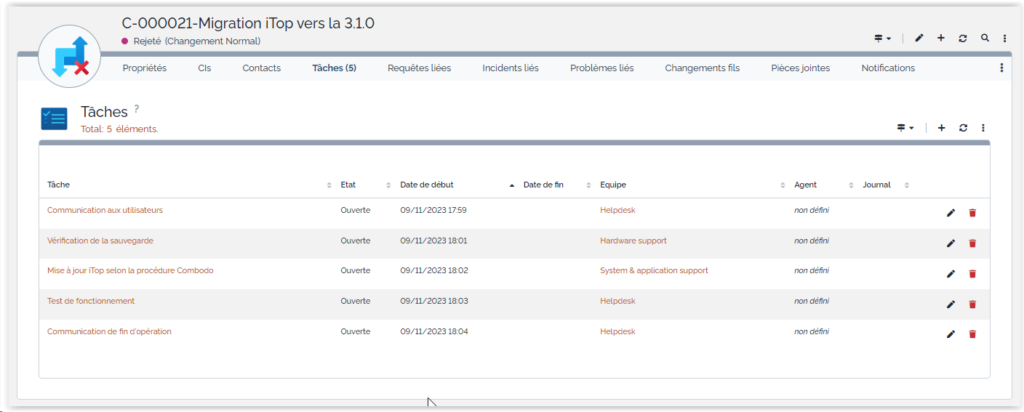
If you have documented your IT assets inventory in the iTop CMDB , the impact analysis will enable you to foresee the impact of your changes not only on your infrastructure, but also on your customer services and contracts.
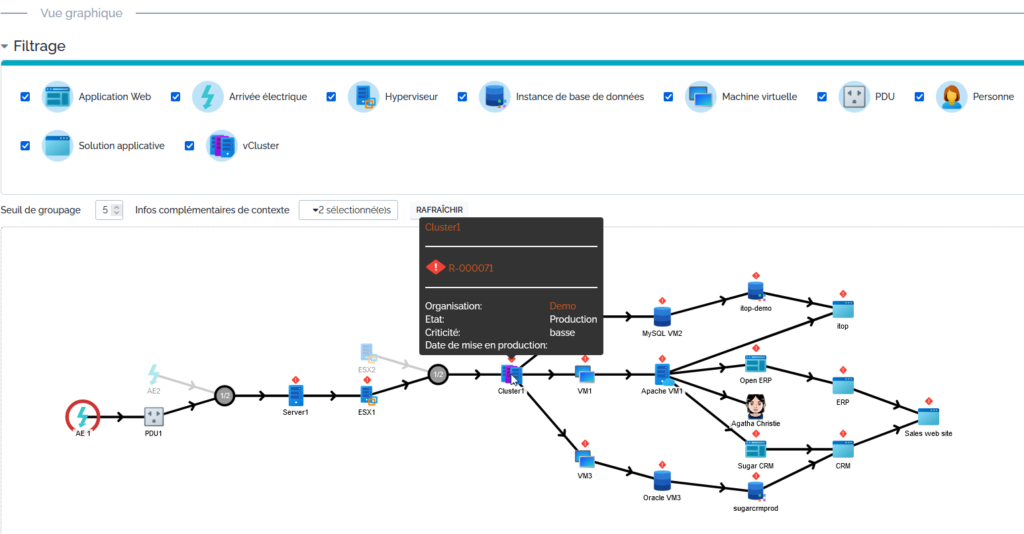
The CAB (Change Advisory Board) will use this impact analysis and the calendar to approve the changes.
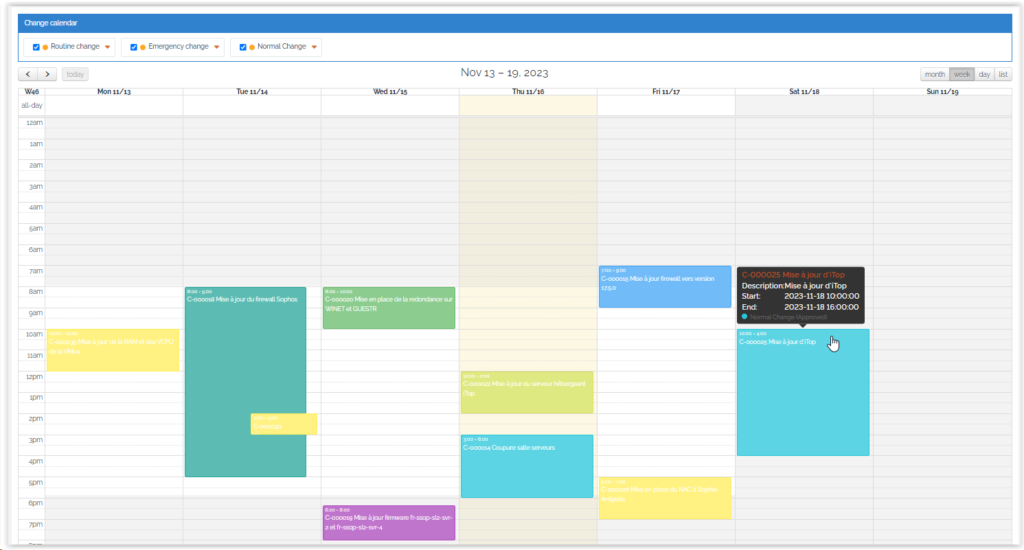
Changes can be approved quickly via a kanban board.
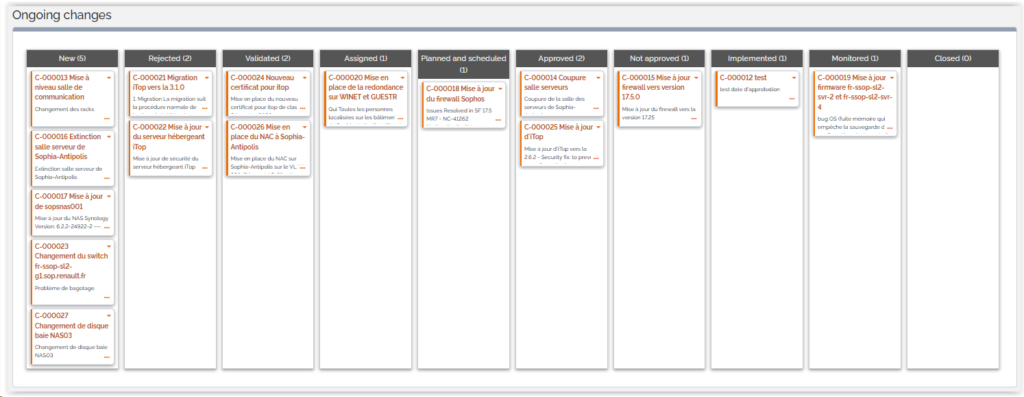
If your process requires a ‘physical’ signature on a document to approve a change, a printout is available as standard for all object types.
Once the change has been approved, you can automatically send an invitation to parties affected by it.
If, despite all your precautions, an incident occurs after the change has been made, your staff can consult the impact analysis in a tab on the incident screen, which will show the changes made in the last 72 hours, as well as the list of changes in a tab on the relevant CI screen.
Improvement through analysis
Change management is part of a continuous improvement process. It is therefore important to analyse these changes on a regular basis in order to identify trends, particularly those that have led to incidents, so that preventive action is taken, and the process improved.
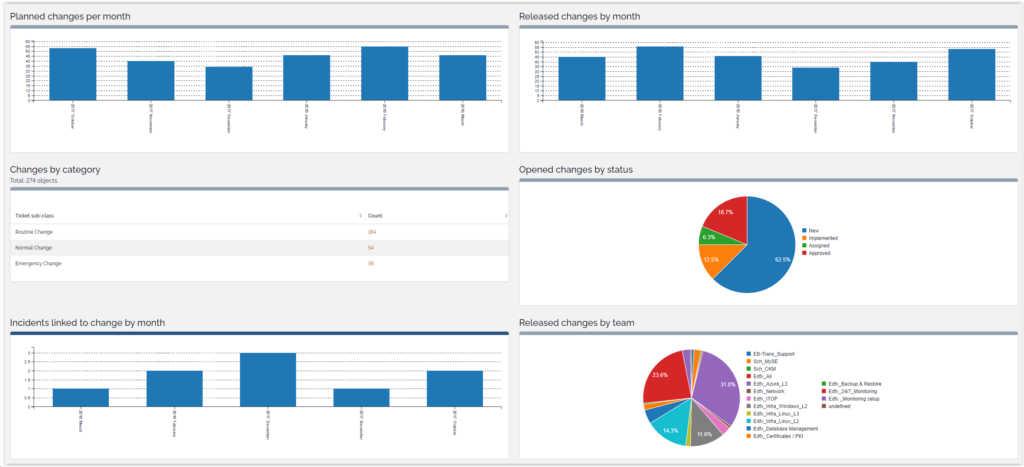
Taking it even further
Processes and operations can be tailored to your organisation’s specific requirements. This is what we helped our client Ramsay Santé achieve, and they can attest to the benefits of implementing change management within their IT Department.
Product Owner at Combodo
